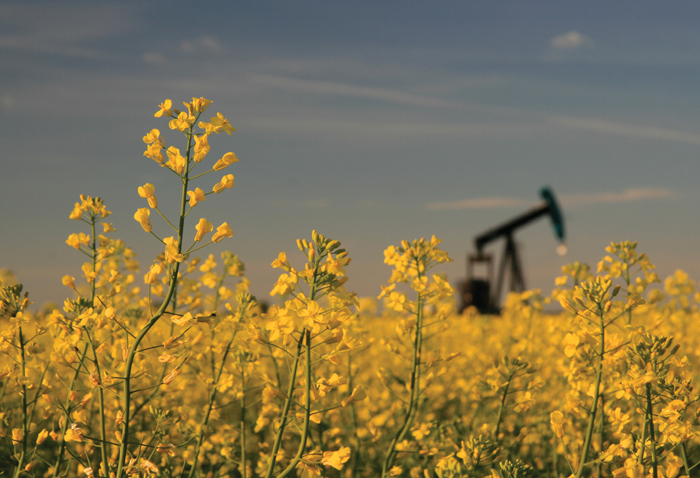A bad-news year for crop production is a good year when it comes to basis — and so farmers should be shopping around this harvest, say market analysts.
“In general in years when supplies are tight locally or in a region, you would normally expect to see basis levels that are stronger than what you would see with a bumper crop,” said Alyssa Mistelbacher, an analyst with FarmLink Market Solutions in Winnipeg.
“A basis reflects the local supply-and-demand relationship, or rather the needs of a local crusher or grain company, so to the extent that the supply is smaller because of the dry conditions, this should lead to relatively stronger basis levels over the coming year. This is something that we are already seeing in wheat.”
Read Also

New crop insurer policy enables easier startup for faba beans
Agriculture Financial Services Corporation updated its normals for faba beans, which may open the door for more Canadian producers to feel comfortable growing the pulse crop in the future.
John De Pape of Farmers Advanced Risk Management is also looking for basis to increase this fall if current conditions hold.
“Two years ago, basis got terrible because we as an industry didn’t have the capacity to move the grain that needed to be moved,” said De Pape. “The crop size was so huge compared to our ability to move it (and) farmers were desperate to move grain so the price had to go down and basis had to go down.”
But this fall, the game will be about best utilizing that capacity to fill orders from grain buyers.
- More on the Alberta Farmer: Wheat commission pricing website to roll out new features
“We will see basis improve simply because we have a set capacity in terms of handling and capacity and a smaller crop,” said De Pape. “The grain companies will bid up to keep their pipelines moving. That’s when you’ll really see some competition in terms of price. The basis will improve if they have more than enough capacity.”
But this tide will not lift all boats, the analysts said — and that’s why producers need to keep a close watch on local markets.
Like many market measurements, the fundamental principles of market basis are simple but the reality can be incredibly complex. For example, different classes and grades of wheat will have entirely different basis levels.
“With wheat in Canada, different classes of wheat are almost like different commodities — the basis for each will be different,” said De Pape.
That makes getting the best price a challenge, he said, adding many producers were caught off guard by the intricacies of marketing wheat after the end of the Canadian Wheat Board monopoly.
“A lot of them thought, ‘Well, I can trade canola — I’ve hedged my canola, wheat won’t be any different,’” said De Pape. “I think they found out it was. Under the Canadian Wheat Board the farmer’s price was not related to the futures price at any given time. Rather it was set by the wheat board as an initial and final payment. But negotiating payments with basis is quite complex.”
For example, buyers of hard red spring wheat set their price basis to the Minneapolis futures market, he said.
“But if they’re buying a lower-quality hard red spring wheat, maybe because the protein’s not there, the value for that wheat might be more relevant to the Kansas City futures contract because it might be competing against winter wheat.
“For most grain companies, their bid to the farmer will be a basis relative to Minneapolis regardless of where they’re going with it. But internally, if they’re buying No. 2 wheat that contains 12 per cent protein, it may be going into a lower-quality market so they may hedge that internally with Kansas City futures — or Chicago wheat futures, depending on the end use. “Buying wheat basis to Minneapolis futures and selling and hedging it in other markets makes the basis paid to farmers do unexpected things.”
In its simplest terms, basis is the difference between the futures price of a commodity and the cash price. It’s a signal to grain companies looking to either attract more grain or slow down their intake as well as to farmers deciding whether to sell or store their product. The best way to look at basis is to consider it a price, not a cost, said De Pape.
“Futures specify a very specific location, a very specific time, and a very specific quality. Any time those things are different, the price will be different.”
Mistelbacher describes basis as a localized interpretation of the futures market.
“Think of it this way: A futures value represents a global price for grain on a given day, which is used as a benchmark and helps to establish local values,” she said. “The purpose of the basis is to allow the local cash price to adjust to fit the reality of local buying and selling interest. It ultimately reflects the local market conditions.”
But basis can be a temperamental measurement. It’s influenced by a number of factors such as foreign exchange rate, transportation and handling costs, storage and profit margin – some of which can vary wildly not just from year to year but even within the growing season.
The steep fall in the Canadian dollar this year is going to have a big impact and so producers should also keep a close watch on the exchange rate.
“As the value of the Canadian dollar goes down in concert with the rising U.S. dollar, our cash basis levels expand, giving us higher cash value opportunities,” said Mistelbacher.
















